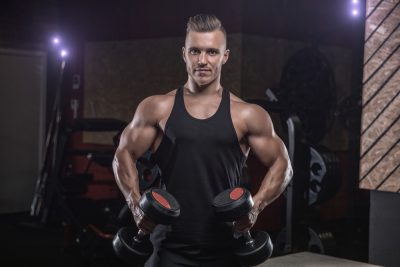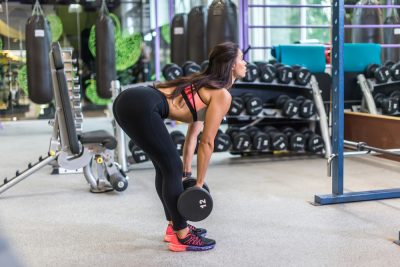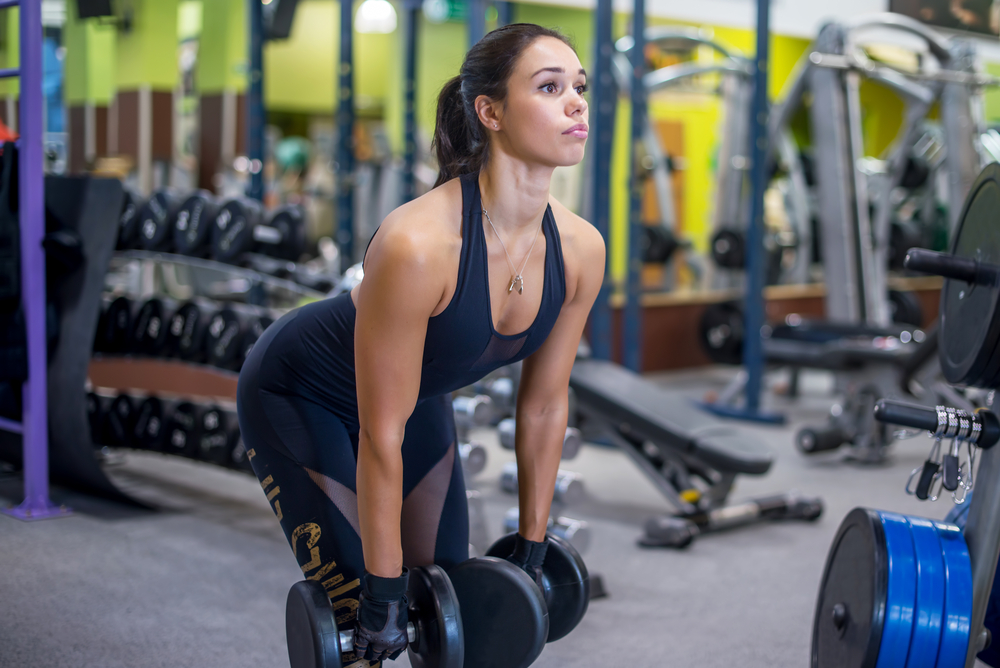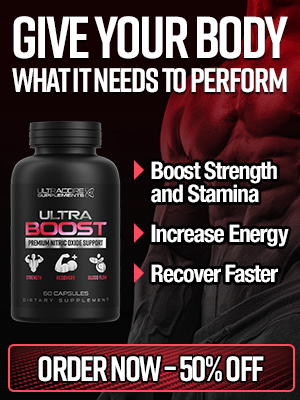Deadlifts are potent exercises that can be done at the gym. Whether you opt for the barbell or dumbbell deadlift, you would love it. Dumbbell deadlifts are isometric exercises that target practically all of the major muscles. The motion involves lifting something from the ground while standing up and then engaging your back. This motion is something that is a part of your everyday life. For example, when you want to pick up a laundry bag, a suitcase, or even if you need to bow down to get something. A lot of strength training coaches say that doing this deadlift is something that actively trains your mind to perform tasks that are hard.
Muscles worked when doing the dumbbell deadlift
The dumbbell deadlift is one of the few exercises that target all your primary muscles. For your primary muscles, it targets the lower back, hamstrings, quadriceps, and gluteus maximus. While for your secondary muscles, it targets the obliques, abs, and trapezius (lower and upper).
Why you should do dumbbell deadlifts
If you want a stronger back and quads that will provide support in any task you are performing, you will need to do the dumbbell deadlift. Deadlifts are a prevalent exercise among athletes, especially if they have a strong spine as it can help them peak their performance. Your lower spine serves as the connector for your upper body and lower body, and it is usually engaged more than you can imagine. When you have stronger quads, you will be able to make bursting movements and also have improved stability for a large number of movements.
This exercise help bodybuilders become better at lifting weights. These sets of exercises continuously need to lift weights over their body, and they would need to recruit their spine for stabilization of the body when performing these movements. Having a weak back can place them on the sidelines for long, painful times. The pain here is emotional and not physical, as they would have to deal with the fact that they cannot visit the gym for a while.
People with a sedentary lifestyle often have a common problem, which is back injury. The body becomes stiff when there is not enough regular movement. Maybe you are trying to lift your luggage off the floor, and you feel that snap in your back, then you know that all your plans are canceled, and you would have to attend to your back injury.
It is essential for everyone to have stronger quads as if they are weak, your back would get hurt trying to compensate. It is an involuntary move for your body to compensate for the weakness of one muscle with another muscle. The deadlift has a functional motion that makes up your everyday movements functional.
Benefits of the dumbbell deadlift
The dumbbell deadlift is an exercise that provides you with a lot of benefits, which is why it is recommended to add it to your exercise program. Even if you would not be able to lift as much as when you are using a barbell, the dumbbell deadlifts still work a number of muscles. The benefits include;
Core control
Just as it is with all the other types of compound movements, the dumbbell deadlift targets your core. However, your grip, as well as the strain on your core, is increased when performing the dumbbell deadlift more than it is when you are using a barbell to deadlift. The strain on your core is increased because it requires more work for you to maintain a flat back and upright torso actively. The transverse abdominis, pelvic floor, and multifidus, which are your deep stabilizing muscles, are the main core muscles that are working. If you want a dumbbell deadlift that is more core-orientated, you can try the suitcase deadlift. For this, you place one dumbbell at your side and then deadlift it in the same way you would pick up a suitcase. This would work the oblique muscles at the side of your midsection and also train the anti-rotation function of your core.
Grip of Iron
Maintaining a strong grip is one of the most challenging factors most people face when doing dumbbell deadlifts, especially if they are making use of a heavier weight. The flexor digitorum superficialis, flexor digitorum profundus, and flexor pollicis longus are the gripping muscles found in the forearm. Your hands work independently, and for this reason, you will find it harder to grip a dumbbell than to grip a barbell. This could turn out bad as your grip may give out before you can significantly work your lower body.
Hammered Hamstrings
The muscles located at the back of your thighs are called the hamstrings. These muscles work in hand with the glutes to flex your knee joints as well as extend your hips. Doing the traditional dumbbell deadlift is sure to hammer your hamstrings, but if you want to increase the intensity of the exercise on your hamstrings, you can try performing a straight-legged dumbbell deadlift. For this variation, you will have to keep your knees fixed in a slightly soft, or a little bit bent, position, and then allow every motion to come from your hips.
Growing Glutes
Your glutes are part of the main muscles that are worked when you are doing the dumbbell deadlift. The glutes are known as the muscles in your butt, and this is the muscle group that consists of your gluteus minimus, medius, and maximus. The work of these muscles is to keep your back straight and extend your hips. A huge sign that you are not activating your glutes is when you feel the dumbbell deadlifts in your back. If this is the case, it is recommended that you keep the weight on your heels and try to sit back slightly more.
How to perform the dumbbell deadlift
These are the steps to follow to perform the deadlift correctly to reap maximum gains and prevent yourself from getting injured;
- First, get into the starting position by standing tall while keeping your spine straight and your feet apart by the distance of your shoulder width.
- Then you set the dumbbells by the side, ensuring that they are in line with your foot, where your center of gravity is located.
- Then lower down to pick up the dumbbells while making sure your shoulders are in line with your knees and your thighs should be parallel to the ground.
- Then, grab the dumbbells firmly and stand up with them. Ensure that they are kept in line with your shoulders and your knees.
- While standing, squeeze your glutes when you get to the top of the movement.
- With the same motion, lower down until the dumbbells make contact with the ground.
Tips when performing the dumbbell deadlift
These are some essential tips to keep in mind when doing the dumbbell deadlift;
- Ensure that your neck is kept neutral, and it is straight with your spine.
- From the start to the finish of the movement, ensure that your arms are kept straight.
- While moving up, ensure that you exhale.
- If you find it challenging to lift heavier weights because of your grip strength, you can opt to use lifting straps.
Variations of the dumbbell deadlift
- Dumbbell suitcase deadlift: This variation can be performed with either one or two dumbbells placed at your sides and then deadlifted as you would when carrying a suitcase.
- Dumbbell Burpee deadlift: This variation consists of a plank and then sees you jump forward to a sitting position. Then, you extend your hips to do the deadlift.
- Single-arm dumbbell deadlift: This variation is done by placing one dumbbell between your legs, and then followed with a press and pull motion.
- Single leg dumbbell deadlift: For this variation, you raise one leg off the ground and then extend it backward.
- Dumbbell stiff leg deadlift: For this variation, you keep your knees stationary and then lower the dumbbells until they are over the top of your feet.
Common mistakes when doing the dumbbell deadlift
These are some of the common mistakes people make when doing the dumbbell deadlift that has been found to impact the efficiency of the exercise as well as increase the risk of sustaining an injury.
Arching your back
It has already been established that your back has to be flat and your spine has to be neutral. If you keep an arched or rounded back position, this would place much pressure and unnecessary stress on your back and could lead to injury. This also relates to your head position as your spine should be neutral up till your head; make sure you do not lookup.
Foot placement
If you keep your feet wider than shoulder-width or hip-width apart, it will compromise your spine by rounding your shoulders and also make the exercise less effective.
Shoulders protracted
You will find it easier to maintain a neutral spine if you retract or pull your shoulder blades back and together. However, your spine would be compromised and round easily if your shoulders protract.








COMMENTS